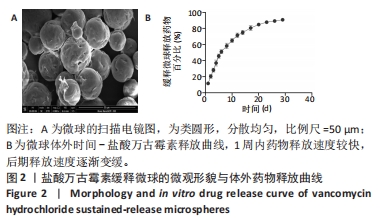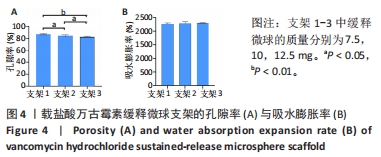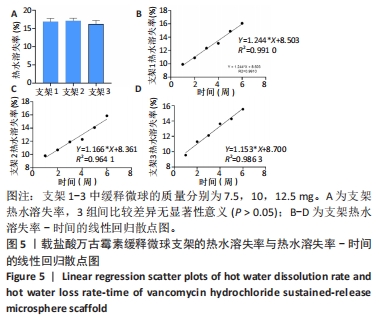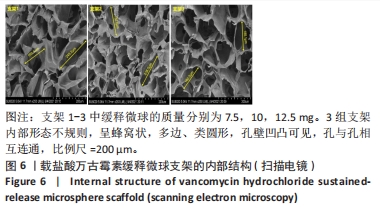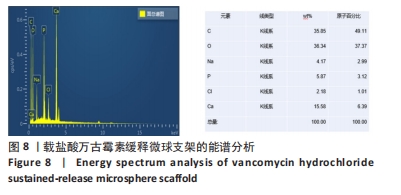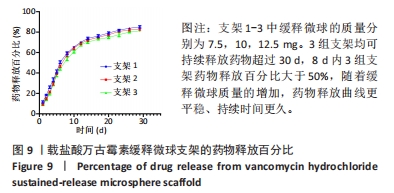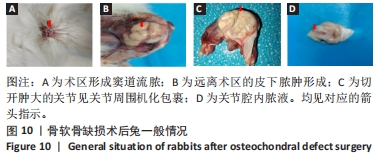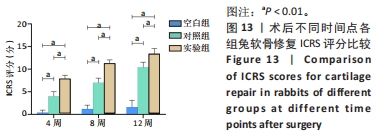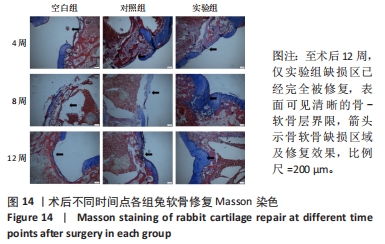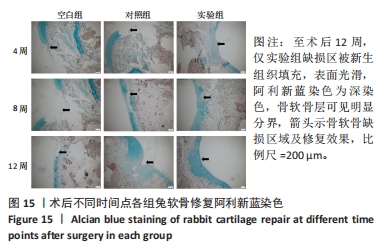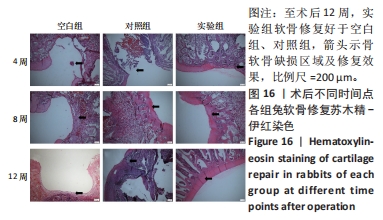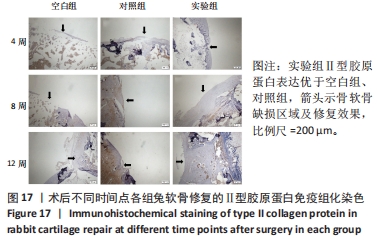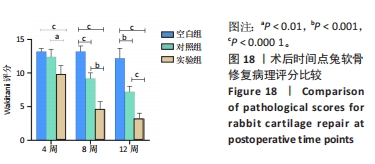[1] DING H, CHENG Y, NIU X, et al. Application of electrospun nanofibers in bone, cartilage and osteochondral tissue engineering. J Biomater Sci Polym Ed. 2021;32(4):536-561.
[2] VAISH A, SHANMUGASUNDARAM S, KIM SA, et al. Biological reconstruction of the joint: Concepts of articular cartilage regeneration and their scientific basis. J Clin Orthop Trauma. 2022;24:101718.
[3] LIU Y, LI M, YIN Z, et al. SUMO-modified bone marrow mesenchymal stem cells promoted the repair of articular cartilage in rats. Cell Biol Int. 2020;44(2):560-568.
[4] LI H, CAO X, WANG J, et al. [Redintegration of articular surface and alignment with tibia type III Pilon fracture]. Zhongguo Xiu Fu Chong Jian Wai Ke Za Zhi. 2012;26(8):926-929.
[5] LEE CH, KWON Y, JUNG IY, et al. Effect of the Articular Surface Incongruency on Surgical Outcome of the Distal Radius Fracture. Biomed Res Int. 2022;2022:8357675.
[6] COOK JL, RUCINSKI K, CRECELIUS CR, et al. Initial Outcomes After Unicompartmental Tibiofemoral Bipolar Osteochondral and Meniscal Allograft Transplantation in the Knee Using MOPS-Preserved Fresh (Viable) Tissues. Am J Sports Med. 2023;51(3):596-604.
[7] FLETCHER AN, JOHNSON LG, EASLEY ME, et al. Midterm Prospective Evaluation of Structural Allograft Transplantation for Osteochondral Lesions of the Talar Shoulder. Foot Ankle Int. 2022;43(7):899-912.
[8] DHILLON J, DECILVEO AP, KRAEUTLER MJ, et al. Third-Generation Autologous Chondrocyte Implantation (Cells Cultured Within Collagen Membrane) Is Superior to Microfracture for Focal Chondral Defects of the Knee Joint: Systematic Review and Meta-analysis. Arthroscopy. 2022;38(8):2579-2586.
[9] SCHUETTE HB, KRAEUTLER MJ, SCHROCK JB, et al. Primary Autologous Chondrocyte Implantation of the Knee Versus Autologous Chondrocyte Implantation After Failed Marrow Stimulation: A Systematic Review. Am J Sports Med. 2021;49(9):2536-2541.
[10] LEE H, KIM HT, JO S. Femoral head cartilage reconstruction using autologous osteochondral mosaicplasty: A case report. Medicine (Baltimore). 2023;102(6):e32913.
[11] YU JR, NAVARRO J, COBURN JC, et al. Current and Future Perspectives on Skin Tissue Engineering: Key Features of Biomedical Research, Translational Assessment, and Clinical Application. Adv Healthc Mater. 2019;8(5):e1801471.
[12] YANG Z, WANG B, LIU W, et al. In situ self-assembled organoid for osteochondral tissue regeneration with dual functional units. Bioact Mater. 2023;27:200-215.
[13] SHI Y, HAN X, PAN S, et al. Gold Nanomaterials and Bone/Cartilage Tissue Engineering: Biomedical Applications and Molecular Mechanisms. Front Chem. 2021;9:724188.
[14] OMID H, ABDOLLAHI S, BONAKDAR S, et al. Biomimetic vascular tissue engineering by decellularized scaffold and concurrent cyclic tensile and shear stresses. J Mater Sci Mater Med. 2023;34(3):12.
[15] YU H, FENG M, MAO G, et al. Implementation of Photosensitive, Injectable, Interpenetrating, and Kartogenin-Modified GELMA/PEDGA Biomimetic Scaffolds to Restore Cartilage Integrity in a Full-Thickness Osteochondral Defect Model. ACS Biomater Sci Eng. 2022;8(10):4474-4485.
[16] HE T, LI B, COLOMBANI T, et al. Hyaluronic Acid-Based Shape-Memory Cryogel Scaffolds for Focal Cartilage Defect Repair. Tissue Eng Part A. 2021;27(11-12):748-760.
[17] WANG T, XU W, ZHAO X, et al. Repair of osteochondral defects mediated by double-layer scaffolds with natural osteochondral-biomimetic microenvironment and interface. Mater Today Bio. 2022;14:100234.
[18] KIM JW, LEE KJ. Development of a Single-nucleotide Polymorphism Genotyping Assay for the Rapid Detection of Vancomycin-intermediate Resistance in Staphylococcus aureus Epidemic Lineage ST5. Ann Lab Med. 2023;43(4):355-363.
[19] LANDERSDORFER CB, LEE WL, NATION RL, et al. Penetration of Vancomycin into Noninfected Bone in Patients Undergoing Total Joint Arthroplasty Evaluated by a Minimal Physiologically Based Population Pharmacokinetic Modeling Approach. Mol Pharm. 2023;20(3):1509-1518.
[20] MOSTAFA AA, EL-SAYED M, MAHMOUD AA, et al. Bioactive/Natural Polymeric Scaffolds Loaded with Ciprofloxacin for Treatment of Osteomyelitis. AAPS PharmSciTech. 2017;18(4):1056-1069.
[21] WANG G, CUI Y, LIU H, et al. Antibacterial peptides-loaded bioactive materials for the treatment of bone infection. Colloids Surf B Biointerfaces. 2023;225:113255.
[22] KHAYAT KASHANI HR. Answer to the letter to the editor of M. Kataria et al. concerning “Local vancomycin therapy to reduce surgical site infection in adult spine surgery: a randomized prospective study” by Salimi S, et al. (Eur Spine J [2022];31:454-460). Eur Spine J. 2023;32(3):1090.
[23] LI S, SHI X, XU B, et al. In vitro drug release and antibacterial activity evaluation of silk fibroin coated vancomycin hydrochloride loaded poly (lactic-co-glycolic acid) (PLGA) sustained release microspheres. J Biomater Appl. 2022;36(9):1676-1688.
[24] LI J, LI K, DU Y, et al. Dual-Nozzle 3D Printed Nano-Hydroxyapatite Scaffold Loaded with Vancomycin Sustained-Release Microspheres for Enhancing Bone Regeneration. Int J Nanomedicine. 2023;18:307-322.
[25] 肖红利,邓江,韩子冀,等.渐进性梯度孔径骨软骨支架的制备及细胞相容性研究[J].中华老年医学杂志,2020,39(4):456-461.
[26] SALTZMAN BM, RIBOH JC. Subchondral Bone and the Osteochondral Unit: Basic Science and Clinical Implications in Sports Medicine. Sports Health. 2018;10(5):412-418.
[27] ZHANG Y, YU J, REN K, et al. Thermosensitive Hydrogels as Scaffolds for Cartilage Tissue Engineering. Biomacromolecules. 2019;20(4):1478-1492.
[28] DONELL S. Subchondral bone remodelling in osteoarthritis. EFORT Open Rev. 2019;4(6):221-229.
[29] LI B, DING T, CHEN H, et al. CircStrn3 targeting microRNA-9-5p is involved in the regulation of cartilage degeneration and subchondral bone remodelling in osteoarthritis. Bone Joint Res. 2023;12(1):33-45.
[30] JACOB G, SHIMOMURA K, NAKAMURA N. Osteochondral Injury, Management and Tissue Engineering Approaches. Front Cell Dev Biol. 2020;8:580868.
[31] FU L, YANG Z, GAO C, et al. Advances and prospects in biomimetic multilayered scaffolds for articular cartilage regeneration. Regen Biomater. 2020;7(6):527-542.
[32] LE TM, VU NB, HUYNH PD, et al. Treatment of Osteochondral Femoral Head Defect by Human Umbilical Cord Mesenchymal Stem Cell Sheet Transplantation: An Experimental Study in Rats. Adv Exp Med Biol. 2021. doi: 10.1007/5584_2021_671.
[33] VAN TUIJN IM, EMANUEL KS, VAN HUGTEN P, et al. Prognostic Factors for the Clinical Outcome after Microfracture Treatment of Chondral and Osteochondral Defects in the Knee Joint: A Systematic Review. Cartilage. 2023;14(1):5-16.
[34] OTLANS P, LATTERMANN C, SHERMAN SL, et al. Cartilage Disease of the Patellofemoral Joint: Realignment, Restoration, Replacement. Instr Course Lect. 2021;70:289-308.
[35] MICHALIK R, PAUER T, BRILL N, et al. Quantitative articular cartilage sub-surface defect assessment using optical coherence tomography: An in-vitro study. Ann Anat. 2019;221:125-134.
[36] HIGA K, KITAMURA N, GOTO K, et al. Effects of osteochondral defect size on cartilage regeneration using a double-network hydrogel. BMC Musculoskelet Disord. 2017;18(1):210.
[37] LUO M, CHEN M, BAI J, et al. A bionic composite hydrogel with dual regulatory functions for the osteochondral repair. Colloids Surf B Biointerfaces. 2022;219:112821.
[38] ALOMAR AZ, SOMILY AM, ALRAIYES TM, et al. Quantification Analysis of the Intraoperative Bacterial Contamination Rate and Level in Osteochondral Autografts. Am J Sports Med. 2016; 44(3):761-766.
[39] WEI J, XIA X, XIAO S, et al. Sequential Dual-Biofactor Release from the Scaffold of Mesoporous HA Microspheres and PLGA Matrix for Boosting Endogenous Bone Regeneration. Adv Healthc Mater. 2023;12(20):e2300624.
[40] WANG W, SONG Y, TIAN Y, et al. TCPP/MgO-loaded PLGA microspheres combining photodynamic antibacterial therapy with PBM-assisted fibroblast activation to treat periodontitis. Biomater Sci. 2023;11(8):2828-2844.
[41] GANDOMKARZADEH M, MOGHIMI HR, MAHBOUBI A. Evaluation of the Effect of Ciprofloxacin and Vancomycin on Mechanical Properties of PMMA Cement; a Preliminary Study on Molecular Weight. Sci Rep. 2020;10(1):3981.
[42] LIU N, HUANG S, GUO F, et al. Calcium phosphate cement with icariin-loaded gelatin microspheres as a local drug delivery system for bone regeneration. Biomed Eng Online. 2022;21(1):89.
[43] GHAREH SM, SHABANI RN, BEHROUZI M, et al. Engineered PLGA microspheres for extended-release of naltrexone: in vitro, in vivo, and IVIVR. Pharm Dev Technol. 2023;28(2):190-199.
[44] 刘华蔚.壳聚糖导管复合NGF缓释微球修复兔面神经缺损的实验研究[D].北京:解放军医学院,军医进修学院,解放军总医院,2011.
[45] FAN L, TENG W, HE J, et al. Value of 3D Printed PLGA Scaffolds for Cartilage Defects in Terms of Repair. Evid Based Complement Alternat Med. 2022;2022:3561430.
[46] LUO M, CHEN M, BAI J, et al. A bionic composite hydrogel with dual regulatory functions for the osteochondral repair. Colloids Surf B Biointerfaces. 2022;219:112821.
[47] 高泽,石志良,李锋,等.材料和孔隙率对可降解支架内骨形成的影响[J].医用生物力学, 2021,36(4):582-588.
[48] PRANANINGRUM W, NAITO Y, GALLI S, et al. Bone ingrowth of various porous titanium scaffolds produced by a moldless and space holder technique: an in vivo study in rabbits. Biomed Mater. 2016;11(1):15012.
[49] MOURA CS, SILVA JC, FARIA S, et al. Chondrogenic differentiation of mesenchymal stem/stromal cells on 3D porous poly (epsilon-caprolactone) scaffolds: Effects of material alkaline treatment and chondroitin sulfate supplementation. J Biosci Bioeng. 2020;129(6):756-764.
[50] MARTINS EA, MICHELACCI YM, BACCARIN RY, et al. Evaluation of chitosan-GP hydrogel biocompatibility in osteochondral defects: an experimental approach. BMC Vet Res. 2014;10:197.
[51] ZHU D, WANG H, TRINH P, et al. Elastin-like protein-hyaluronic acid (ELP-HA) hydrogels with decoupled mechanical and biochemical cues for cartilage regeneration. Biomaterials. 2017; 127:132-140.
[52] 向柄彦,李鹏,柏帆,等.载万古霉素缓释微球纳米羟基磷灰石/壳聚糖支架联合自体红骨髓可修复慢性骨髓炎兔的骨缺损[J].中国组织工程研究,2019,23(6):843-848.
[53] LI J, LI K, DU Y, et al. Dual-Nozzle 3D Printed Nano-Hydroxyapatite Scaffold Loaded with Vancomycin Sustained-Release Microspheres for Enhancing Bone Regeneration. Int J Nanomedicine. 2023;18:307-322.
[54] 马涛,尚北城,陈庆华,等.万古霉素阳离子脂质体复合纳米羟基磷灰石/壳聚糖/魔芋葡苷聚糖支架的制备与降解及药物的体外释放研究[J].中华创伤骨科杂志,2014,16(10):891-897.
[55] 冯建波,李陈诚,刘金月,等.金黄色葡萄球菌生物膜克氏针置入建立创伤性大鼠骨髓炎模型[J].中国组织工程研究,2022,26(5):700-705.
[56] 唐洪.自体软骨微粒复合仿生凝胶修复局灶性关节软骨缺损研究[D].重庆:第三军医大学,2016.
|

